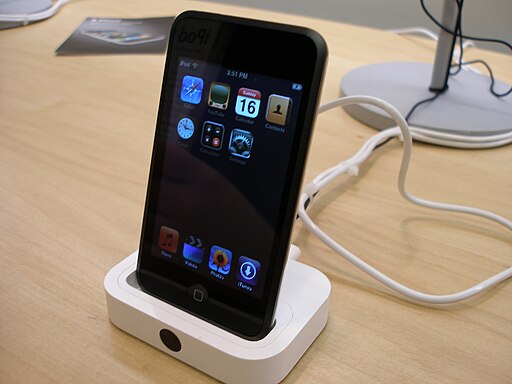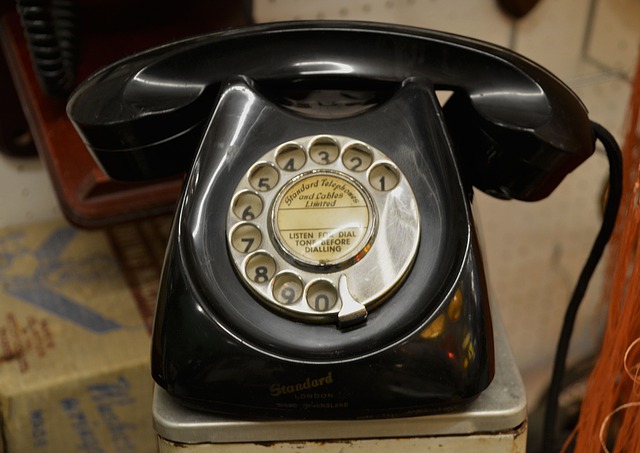A colleague recently related a story to me which reminded me of the devices I had in my life which could be considered forerunners to the iPhone. I don’t mean in the sense of a phone – after all, that is one of the least used functions of my iPhone – but rather as a device for holding information that I can carry around with me.
Certainly some of my mobile phones fulfilled this role to an extent, but the devices I will recount now were dedicated to the task of capturing, storing, and divulging information on the go. You might think your smartphone took its cues from the world of hand written data, as iOS 6 and earlier tried to portray with skeuomorphic design, but in fact their forbears had already made this leap.
Casio SF-8000 Digital Diary
 I loved this device. I must have bought it soon after I started working in the late 1980s. It was billed at the time as an “advanced personal data management tool” and contained many functions we may find familiar from today’s smartphones.
I loved this device. I must have bought it soon after I started working in the late 1980s. It was billed at the time as an “advanced personal data management tool” and contained many functions we may find familiar from today’s smartphones.
Separate telephone and business card directories held what we’d find in today’s Contacts app. A schedule keeper along with a separate calendar display did most of what the iOS Calendar app does. Memo mode was for basic text storage like earlier versions of today’s Notes app. It had local and world times, a calculator, a password protected “secret memory area,” and two units could be cabled together to exchange information. The basic concepts of personal information storage for those on the go were well formed in this device.
However the design and interface was quite far removed from the iPhone. It was a landscape-oriented clamshell design, about 16cm x 8cm with the bottom half holding a full QWERTY keyboard with many additional keys, and the top half holding a 32 character by 6 line LCD display which left a generous amount of space around it including for an additional row of function keys. While the display was marketed as 32 x 6 characters, it was in fact a fully graphic capable screen and some modes used larger font sizes, such as the calculator, or smaller, such as the calendar.
In using the digital diary you did have to learn a few tricks to get in and out of the various modes, but in general it was pleasantly easy to use and a real asset in my job. It was so fun to use I used to actively look for information to record.
My abiding memory of this device was working out how to determine the dates of all 11 statutory holidays observed in New Zealand and entering these in the calendar view for many, many years into the future. Long past when the device would fall into disuse. I can still work out most in my head, other than Easter, to this day.
As the Casio pre-dated any cellphone use for me, it was my only “carry device” for a number of years. It did a fantastic job.
Palm Pilot
My next device was an original series Palm Pilot. This was a huge leap over the Casio in a number of important ways. First, it took on what would be two key attributes of the later iPhone – it was a single block in portrait orientation designed around a large touch screen, and it had no keyboard. While those aspects are conceptually similar to an iPhone, again the implementation was markedly different.
The touch screen was resistive – meaning you had to press hard to deform the soft top layer – and you used a plastic stylus to achieve this with reasonable accuracy. You could use a strong fingernail if needed, but it was not an easy task given the pressure required. The screen was a monochrome LCD display not unlike that on the Casio, although freer use of graphics and differing text sizes was made. But the defining feature of Palm Pilots was the method of text entry.
Below the LCD screen was a writing area, still covered by the resistive touch surface. In this area you would write one letter at a time in a special form called “Graffiti.” Each letter shape was similar to the capital English letter, but with some differences designed to speed entry. For instance, the letter A was drawn simply as an upside-down V. The letter E was drawn like a back to front number 3. Because of the similarity of some digits and letters – O and 0, I and 1 – there was a separate area for digits. I got pretty quick with Graffiti entry, although I couldn’t write for long without my hand cramping up due to the amount of pressure required on the screen.
The included apps were again not unlike the Casio ones, although with the more powerful hardware and touch screen they were a little more capable. You could also sync the data with your PC, either to a Palm-supplied application, or to Microsoft Outlook.
This PC connection, achieved with a docking cradle, also allowed the installation of additional apps. This was very much like the basic principle of an early iPhone and indeed later versions of Palm devices were combined with mobile phones under the Treo name.
IBM Workpad (Palm V)
 While I was working for IBM, an opportunity arose to purchase an IBM Workpad at a significant discount. If you’ve never heard of the Workpad, that’s not surprising. It was not terribly successful, only selling for a short period of time. However, if you’ve heard of the Palm V – the fifth generation of Palm Pilot – then you know what a Workpad was capable of, as it was simply an IBM branded version of this.
While I was working for IBM, an opportunity arose to purchase an IBM Workpad at a significant discount. If you’ve never heard of the Workpad, that’s not surprising. It was not terribly successful, only selling for a short period of time. However, if you’ve heard of the Palm V – the fifth generation of Palm Pilot – then you know what a Workpad was capable of, as it was simply an IBM branded version of this.
While the original Palm Pilot had a plastic case, the Workpad had a metal case and was much slimmer. It also added an infrared capability for inter-device data transfer. However this was of minimal value with extremely limited range. I downloaded an app that could simulate a TV remote control, but I found it only worked if I held the Workpad within a few inches of the TV’s IR receiver.
In almost all other respects, the WorkPad was just a slightly better version of the original Palm Pilot.
iPod Touch

Fun fact: by my calculations, I had one of the first 100 iPhone 3Gs sold in the world. New Zealand were the first country where they went on sale and on that opening night there were only three shops in the whole country selling them. I was 23rd in line at one of them.
Conclusion
While the original iPhone was so much more than these earlier devices, I do believe that those basic functions of information capture and retrieval, along with the familiar phone function, helped ground it in something we knew. If we had gone from pen and paper directly to the iPhone, I think it would have been a much harder road.


Ah, memories. The Palm Mac software always worked. I miss that.
Back in Windows CRT days, I had the Timex Data-Link that updated from the computer master file when held up to the CRT that flashed data into the watch’s optical sensor. Was pretty slick.
https://en.wikipedia.org/wiki/Timex_Datalink
Ooooooo Palm. I still have my Palm T3 with color screen and sliding open to increase the screen size. I wore it on a belt clip all day every day. In fact my family and coworkers thought it was part of my body.
Sadly, after a while its battery didn’t hold a charge for long and replacement was too expensive. I still can’t get myself to throw it out so it’s tucked away somewhere in a box.
*whisper* apple neewwton!
You didn’t own one though.